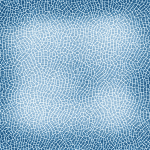The term "urban heat island" (UHI) may not be common language at every dinner table, but it’s a phenomenon that significantly impacts the microclimate of many urban areas globally. It refers to the heightened temperatures experienced in urban environments when compared to their surrounding rural areas. The UHI effect is mainly attributed to the vast stretches of asphalt and concrete found in cities, absorbing and then radiating heat. This increased heat has repercussions not only on the overall comfort of city dwellers but also on energy consumption, air quality, and the general livability of our cities.
The building and design industry is increasingly recognizing its responsibility in mitigating the UHI effect. Sustainable design, green roofs, and energy-efficient buildings are some of the methods being employed to make our urban environments more liveable. Let’s delve into these topics more.
Cela peut vous intéresser : How can data analytics and AI be used to optimize real estate portfolio management and investment decisions?
Incorporating Sustainable Design
Sustainable design is a key element in reducing the UHI effect, and it starts right from the planning stage of real estate developments. It is not just about integrating renewable energy sources or using energy-efficient appliances. Urban planning and architectural design play a crucial role in creating buildings and urban areas that reduce heat production and consumption.
One method is to optimize the building orientation. By orienting buildings to maximize natural light and minimize heat absorption, you can control indoor temperatures without relying heavily on air conditioning systems. The use of energy-efficient materials and the installation of high-performance windows also aid in reducing heat gain and energy consumption.
A lire en complément : What strategies can real estate developers use to ensure the long-term viability of their projects in changing climates?
Another important aspect is creating open green spaces within development projects, as vegetation plays a significant role in reducing surface temperature and improving air quality. These areas offer a cooling effect as plants absorb CO2 and release oxygen, contributing to a cooler, healthier urban microclimate.
Green Roofs: An Investment for the Future
Green roofs, or living roofs, present an innovative way to mitigate the UHI effect. By replacing traditionally heat-absorbing rooftop materials with vegetation, these roofs can lower the surrounding air temperatures and improve building energy efficiency.
A green roof works by absorbing sunlight instead of reflecting it back into the atmosphere. The plants on the roof’s surface take up the sun’s radiation for photosynthesis, reducing heat transfer to the building and lowering the cooling demand. This process contributes to less energy consumption, reducing the heat produced by energy generation and leading to lower greenhouse gas emissions.
Moreover, green roofs have the added benefit of improving air quality. The vegetation on the roof can filter particulate matter from the air, absorb pollutants, and provide oxygen, positively affecting the urban microclimate.
Energy-Efficient Buildings: The Role of Innovation
Energy efficiency plays a crucial role in reducing the UHI effect. By lowering energy consumption, we can decrease heat production from energy generation plants, which contributes significantly to the UHI effect.
Energy-efficient buildings use design strategies, technologies, and materials that minimize energy use and optimize natural light. This can be achieved through the use of high-performance windows, insulation, energy-efficient heating and cooling systems, and automation systems that can adjust lighting, heating, and cooling according to the building’s occupancy and use.
In addition, incorporating renewable energy sources like solar panels into the design can significantly reduce a building’s reliance on the grid, thereby reducing its carbon footprint.
Urban Forestry: Greening our Cities
Trees and green spaces play a vital role in reducing the UHI effect. Urban forestry involves the planting and care of trees in urban settings, and it offers multiple benefits.
Trees absorb and store CO2, reducing the concentration of this greenhouse gas. They also provide shade, reducing surface temperatures and creating cooler microclimates around them. This is especially important in cities, where hard surfaces like concrete and asphalt can absorb and re-radiate heat, contributing to higher temperatures.
Moreover, trees can improve air quality by capturing pollutants in their leaves and bark. They also contribute to stormwater management by reducing runoff and controlling erosion.
Urban forestry is an essential component of sustainable urban planning, offering a cost-effective method to mitigate the UHI effect and improve the quality of life in urban areas.
The Role of Water in Urban Microclimate
Water bodies can significantly impact the urban microclimate and help reduce the UHI effect. Water has a higher heat capacity than any other common substance, meaning it can absorb a lot of heat before its temperature increases.
This cooling effect can be leveraged in urban design by incorporating water features into public spaces or building designs. These could include fountains, ponds, or even water walls. When water evaporates, it absorbs heat, effectively reducing the surrounding air temperature.
Similarly, rainwater collection systems can be used to irrigate green roofs or urban gardens, contributing further to cooling the urban microclimate.
In conclusion, real estate development designs that prioritize sustainable practices, energy efficiency, and green spaces are the way forward in mitigating the UHI effect and creating liveable, healthy urban areas. By taking advantage of the benefits of trees, green roofs, and water bodies, we can make strides towards building cities that are not only sustainable but also resilient in the face of climate change.
Embracing Technological Innovations for Energy-Efficient Buildings
The application of technology in designing and constructing energy-efficient buildings has an enormous impact on reducing the UHI effect. The integration of innovative technologies such as smart thermostats, energy-efficient appliances, and renewable energy sources like solar panels, can significantly curb energy consumption in urban areas.
Smart thermostats and automation systems can adjust heating, cooling, and lighting according to the occupancy and use of the building. These technologies help in maintaining a comfortable indoor environment while ensuring minimized energy usage. Other appliances like energy-efficient refrigerators, washing machines, and dishwashers also contribute to the overall reduction of energy consumption.
The incorporation of renewable energy like solar panels in the building design can significantly offset reliance on the power grid. This technology harnesses solar radiation, which would otherwise contribute to heat stress, and converts it into usable electricity. Such an initiative does not only reduce the building’s carbon footprint but also decreases heat production from energy generation plants, contributing to a cooler urban microclimate.
Incorporating Water Bodies in Urban Design
The integration of water bodies in urban design plays a significant role in cooling the urban microclimate and mitigating the UHI effect. The higher heat capacity of water means it absorbs more heat before its temperature increases, offering a natural cooling effect on the surrounding environment.
Incorporating elements like water features, such as fountains, ponds, or water walls, into public spaces and building designs, can aid in reducing the surrounding air temperatures. The evaporation of water absorbs heat, effectively creating a cooler environment.
Moreover, installing rainwater collection systems can have multiple benefits. These systems can capture and store rainwater, which can then be used for irrigating green roofs and urban gardens, further enhancing their cooling effect. This practice not only contributes to a cooler urban microclimate but also promotes a sustainable approach to water management.
Conclusion
In the face of rising global temperatures and the increasing prevalence of urban heat islands, there is an urgent need to rethink how we design and construct our urban environments. Tackling this problem is not a niche issue; it demands a concerted effort from all stakeholders, including architects, urban planners, and policy-makers.
Real estate developments that prioritize sustainable design, energy efficiency, and the incorporation of green spaces and water bodies offer a practical way forward. Through the incorporation of green roofs, energy-efficient buildings, urban forestry, water bodies, and cutting-edge technology, we can make significant strides towards creating cities that are not only more liveable but also resilient in the face of climate change.
Dealing with the UHI effect and enhancing urban microclimates isn’t a one-off task—it requires continuous effort, innovation, and adaptation. However, the benefits—improved air quality, reduced energy consumption, and a healthier living environment—are well worth the effort. As we continue to adapt to changing climatic conditions, sustainable, efficient, and green urban development will not be an option but a necessity.











